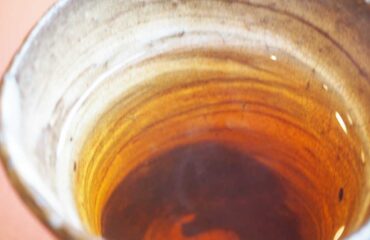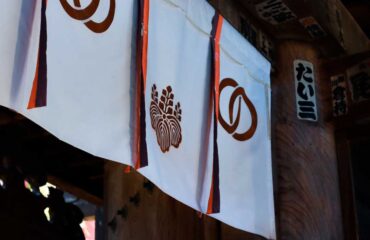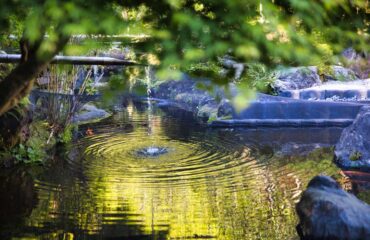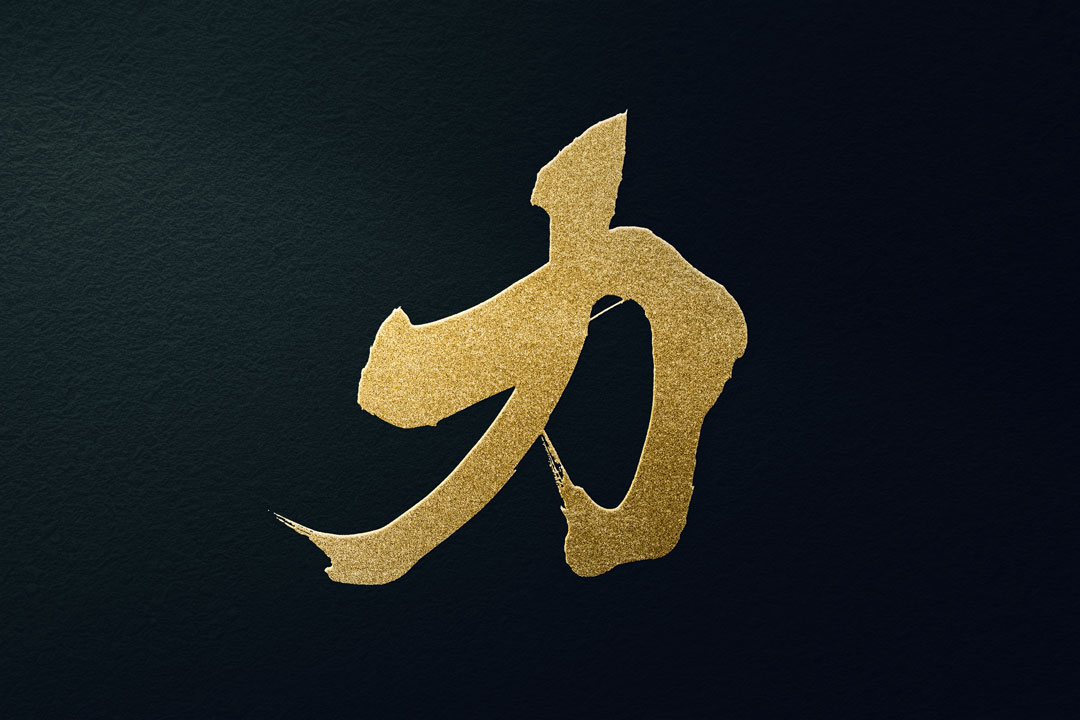
The Origin of Strength in Kanji Symbol
The Kanji symbol for strength, “力 (Chikara)”, is a potent and striking character with a rich cultural history and significance.
It symbolizes one of the most crucial human qualities recognized universally – strength.
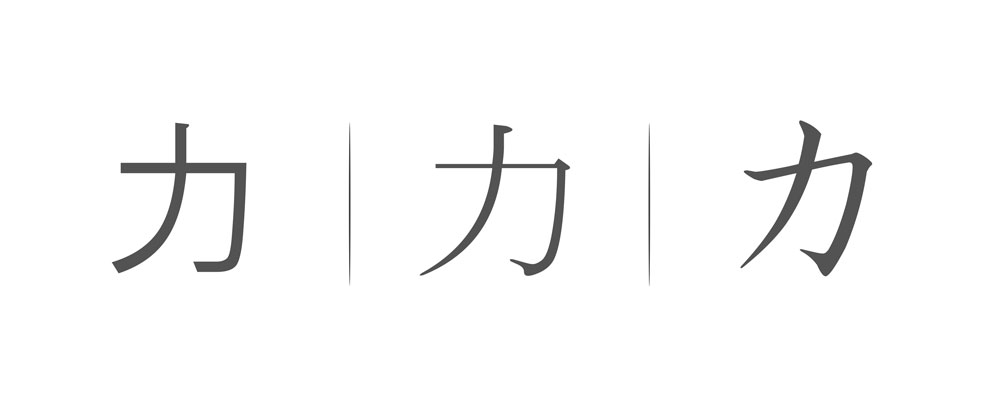
◆力
Hiragana Reading (Onyomi): Ryoku, Riki
Hiragana Reading (Kunyomi): Chikara
Historical Background and Symbolism of Kanji Symbol for Strength
The symbol 力 (Chikara) is deeply rooted in the agrarian history of East Asia.
Originally designed to represent a plow, it signifies the labor-intensive and strenuous activity of tilling the land, highlighting the physical strength required for such tasks.
Over time, the kanji has come to represent more than physical power.
It symbolizes emotional, mental, and spiritual strength as well.
Today, 力 is used in various combinations with other Kanji symbols to form words related to power, effort, energy, and capability.
Stroke order of the Kanji symbol for Strangth
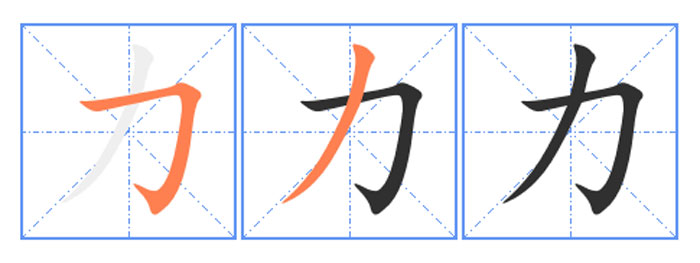
The stroke order for writing the kanji symbol for strength is straightforward and consists of two strokes.
-
The first stroke goes from the top and curves slightly to the right. It then goes diagonally downward to the left, making a shape similar to an inverted ‘L.’
-
The second stroke starts from the middle of the first stroke, moving diagonally downward to the right, and flicks out at the end. This stroke looks similar to a checkmark or a tick.
Correct stroke order is crucial when writing kanji because it affects the balance and aesthetic appeal of the symbol.
Usage of the Kanji Symbol for Strength
The kanji for strength is used in various contexts, including words like 力量 (rikiryou) meaning “power” or “capability,” and 力作 (rikisaku) signifying a “great work” or “masterpiece.”
This kanji is also frequently used in names, proverbs, idioms, and martial arts to represent inner strength, courage, or physical power.
Strenght in Kanji written with a Japanese brush



Kanji Compound Words Containing ‘力’ (Strenght)
◆力業【Chikara-waza】
Hiragana Reading: ちからわざ
Meaning: Physical labor or an action that relies on physical strength.
◆力演【Riki-en】
Hiragana Reading: りきえん
Meaning: Passionate performance.
◆力学【Riki-gaku】
Hiragana Reading: りきがく
Meaning: Mechanics, the branch of physics concerned with the motion of objects and the forces acting on them.
◆力説【Riki-setsu】
Hiragana Reading: りきせつ
Meaning: Emphatic assertion.
◆力戦【Riki-sen】
Hiragana Reading: りきせん
Meaning: To fight with all one’s might.
◆力走【Riki-sou】
Hiragana Reading: りきそう
Meaning: To run with full force.
◆力量【Riki-ryou】
Hiragana Reading: りきりょう
Meaning: Ability or the measure of one’s capability.
◆威力【I-ryoku】
Hiragana Reading: いりょく
Meaning: Power or forcefulness, especially in making others submit.
◆怪力【Kai-riki】
Hiragana Reading: かいりき
Meaning: Supernatural or extraordinary strength.
◆学力【Gaku-ryoku】
Hiragana Reading: がくりょく
Meaning: Academic ability or knowledge acquired through study.
◆活力【Katsu-ryoku】
Hiragana Reading: かつりょく
Meaning: Vitality or energy.
◆火力【Ka-ryoku】
Hiragana Reading: かりょく
Meaning: Firepower or intensity of fire.
◆画力【Ga-ryoku】
Hiragana Reading: がりょく
Meaning: Artistic ability or skill in drawing.
◆眼力【Gan-riki】
Hiragana Reading: がんりき
Meaning: Power of observation or the ability to discern.
◆協力【Kyou-ryoku】
Hiragana Reading: きょうりょく
Meaning: Cooperation or collaboration.
◆気力【Ki-ryoku】
Hiragana Reading: きりょく
Meaning: Willpower or mental energy.
◆筋力【Kin-ryoku】
Hiragana Reading: きんりょく
Meaning: Muscular strength.
◆権力【Ken-ryoku】
Hiragana Reading: けんりょく
Meaning: Power, especially the power held by a state or government.
◆実力【Jitsu-ryoku】
Hiragana Reading: じつりょく
Meaning: Actual ability or true capability.
◆尽力【Jin-ryoku】
Hiragana Reading: じんりょく
Meaning: To do one’s utmost or to give one’s best effort.
Four-Character Kanji Phrases Containing ‘力’ (Strenght)
◆一力当先【Ichiryoku-tousen】
Hiragana Reading: いちりょくとうせん
Meaning: Engaging the enemy at the forefront using one’s own power. “Ichiryoku” represents one’s own power, while “Tousen” means to confront the enemy head-on.
◆鋭意努力【Eii-doryoku】
Hiragana Reading: えいいどりょく
Meaning: Making an effort with full concentration and determination. “Eii” signifies dedicated effort.
◆廻天之力【Kaiten-no-chikara】
Hiragana Reading: かいてんのちから
Meaning: A tremendous force that can change the entire state of affairs or turn an unfavorable situation advantageous.
◆怪力乱神【Kairiki-ranshin】
Hiragana Reading: かいりきらんしん
Meaning: Mysterious and bizarre phenomena or events that cannot be understood by human knowledge.
◆勤倹力行【Kinken-rikko】
Hiragana Reading: きんけんりっこう
Meaning: Working diligently, living frugally, and making the utmost effort.
◆苦学力行【Kinken-rikko】
Hiragana Reading: くがくりっこう
Meaning: Working to earn tuition and studying hard despite difficulties. “Kugaku” signifies studying while working hard and facing challenges.
◆鴻雁愛力【Kogan-airiki】
Hiragana Reading: こうがんあいりき
Meaning: Working to earn tuition and studying hard despite difficulties. “Kugaku” signifies studying while working hard and facing challenges.
◆力戦奮闘【Rikisen-funto】
Hiragana Reading: りきせんふんとう
Meaning: Fighting or striving with all one’s might. “Rikisen” means battling with full force.
Summary
The kanji “力” signifies more than just a character in the Japanese language.
It embodies the concept of human strength in its many forms.
Understanding its origins, the way to write it, and how it’s used is a crucial step toward gaining deeper insights not only into the language but also into the culture from which it arose.
Through this single character, we can learn about the multifaceted nature of human strength and how it’s reflected in Japanese language and culture.
Other Kanji Introduction
Dragon in Japanese Kanji Symbol
About Us
SANTEN Design is a company specializing in the production of brush lettering logos.
We specialize in the creation of flexible brush lettering logos to suit a variety of uses and requests.
We will be happy to provide you with quotations, consultations on various types of production,
and of course, detailed information on our achievements.
Please feel free to contact us for a quotation.

